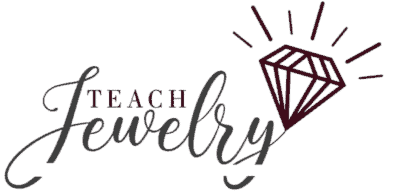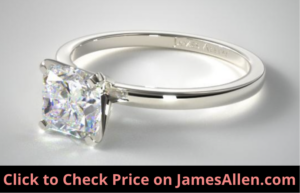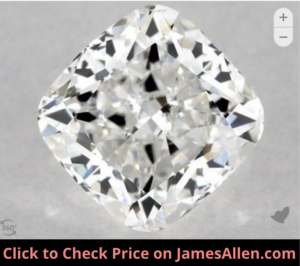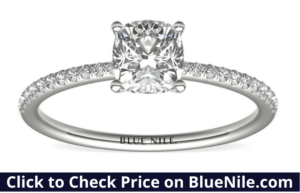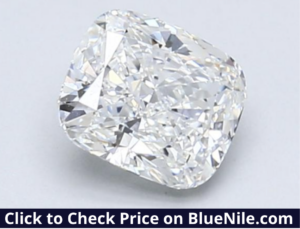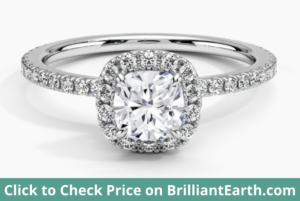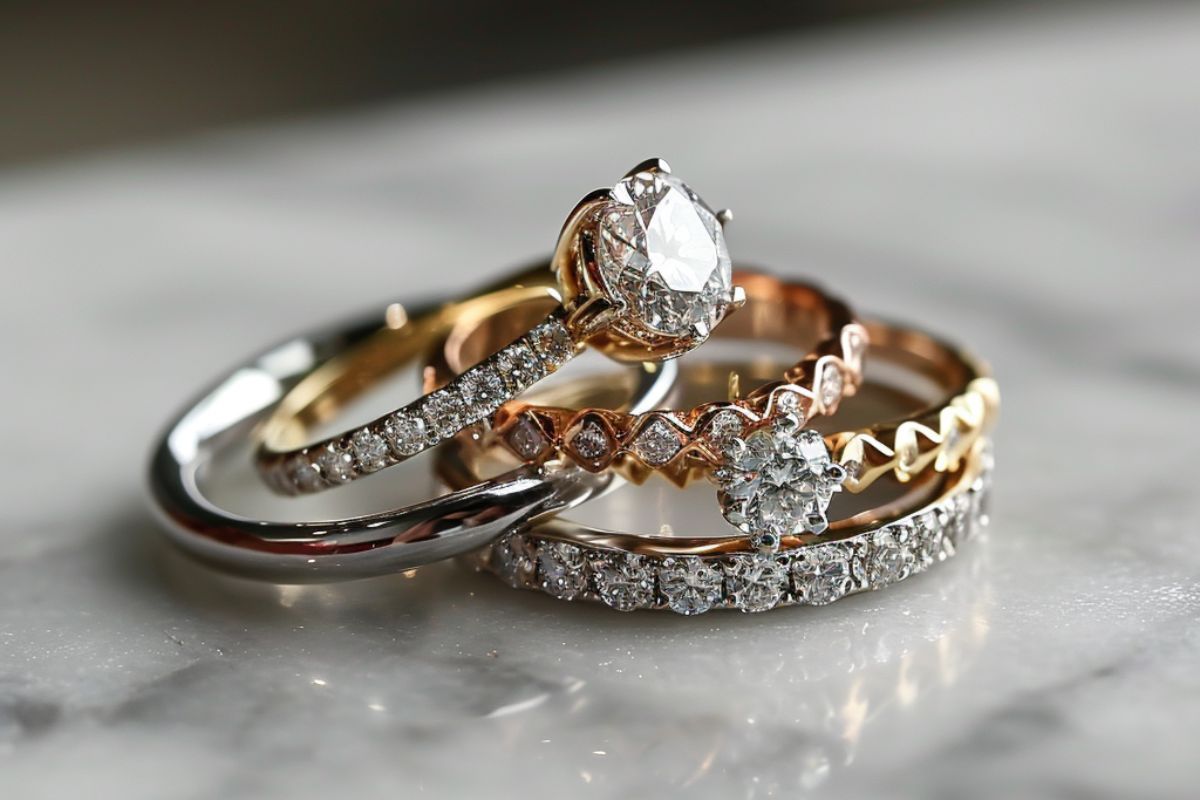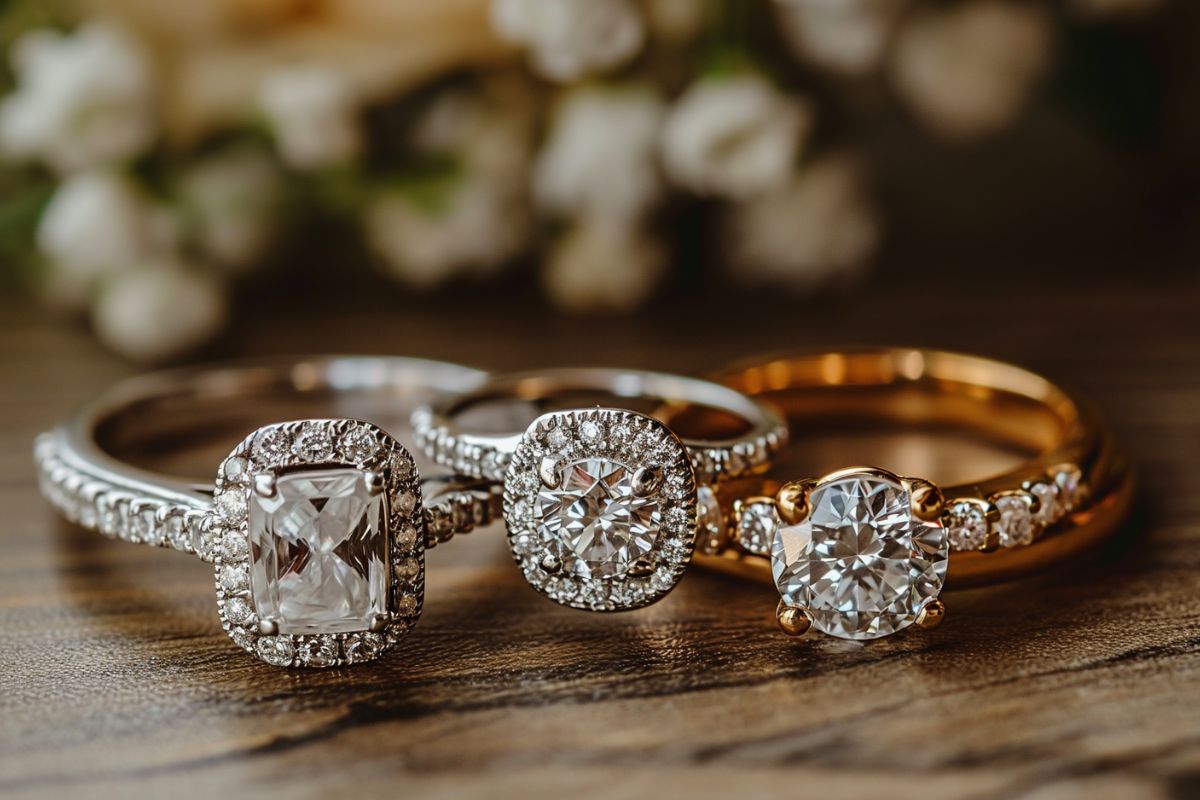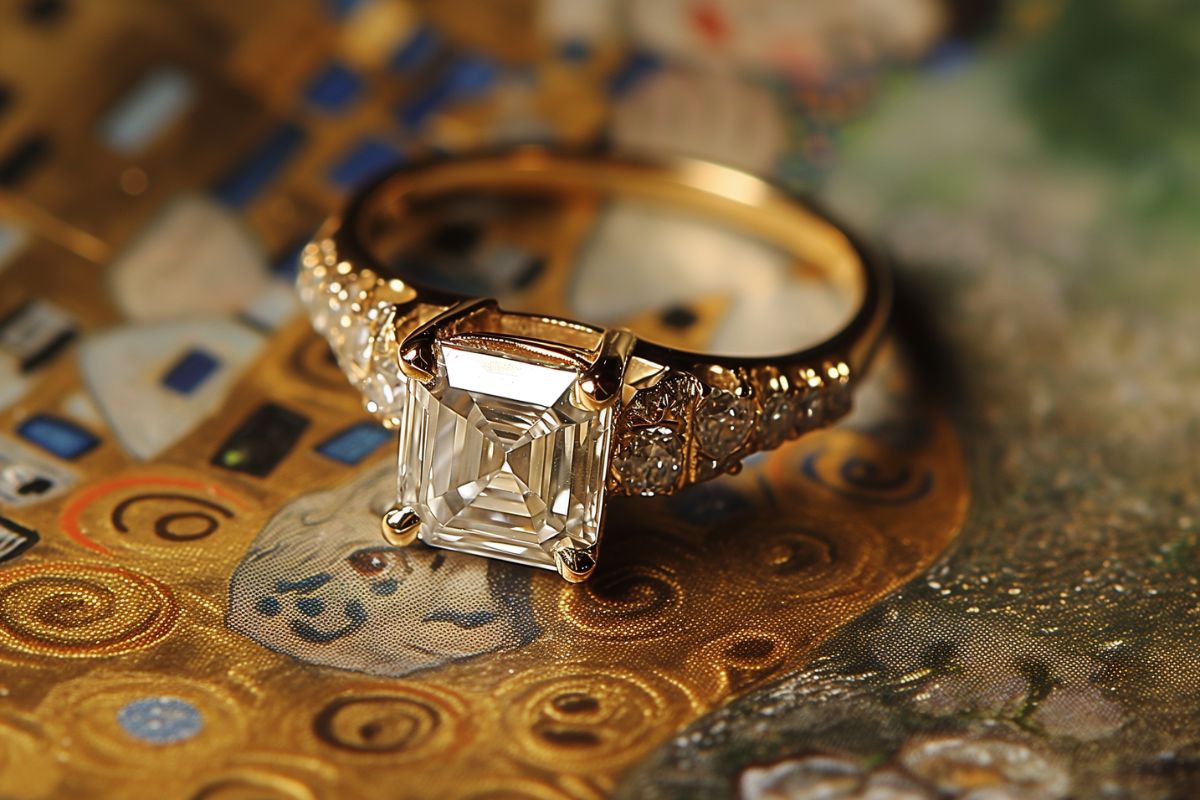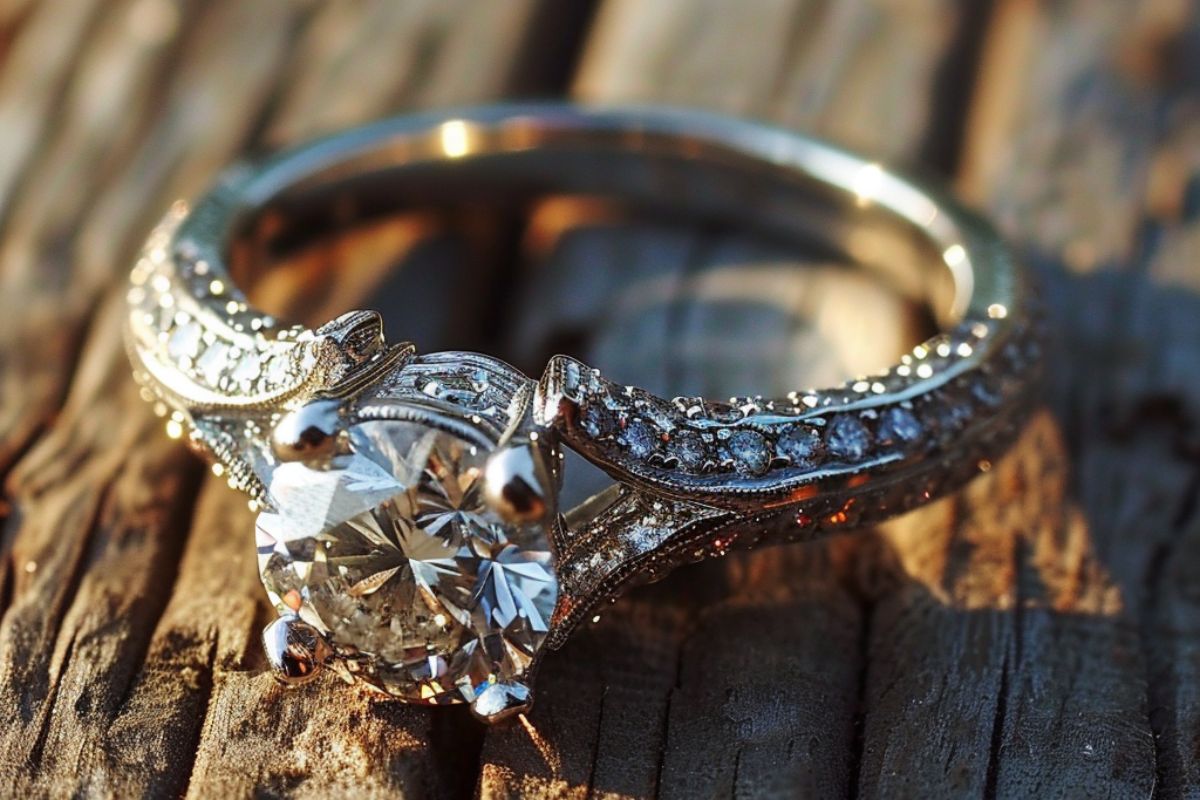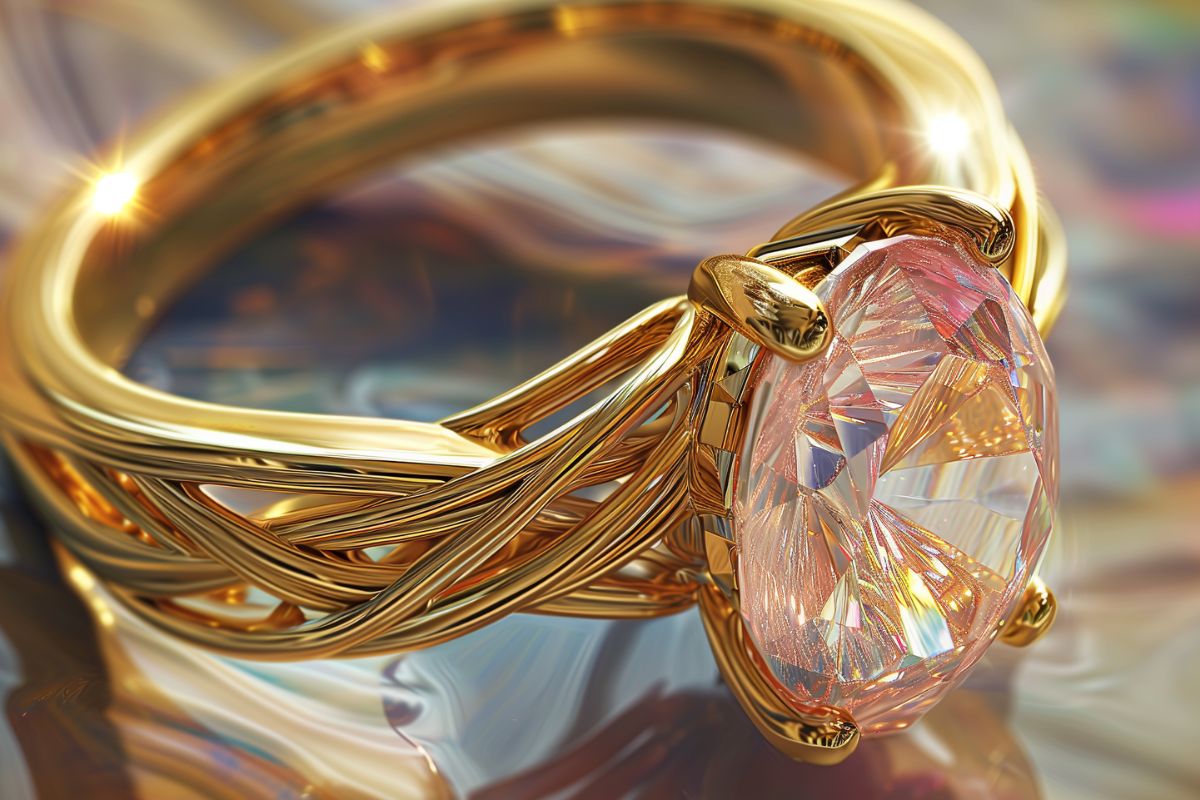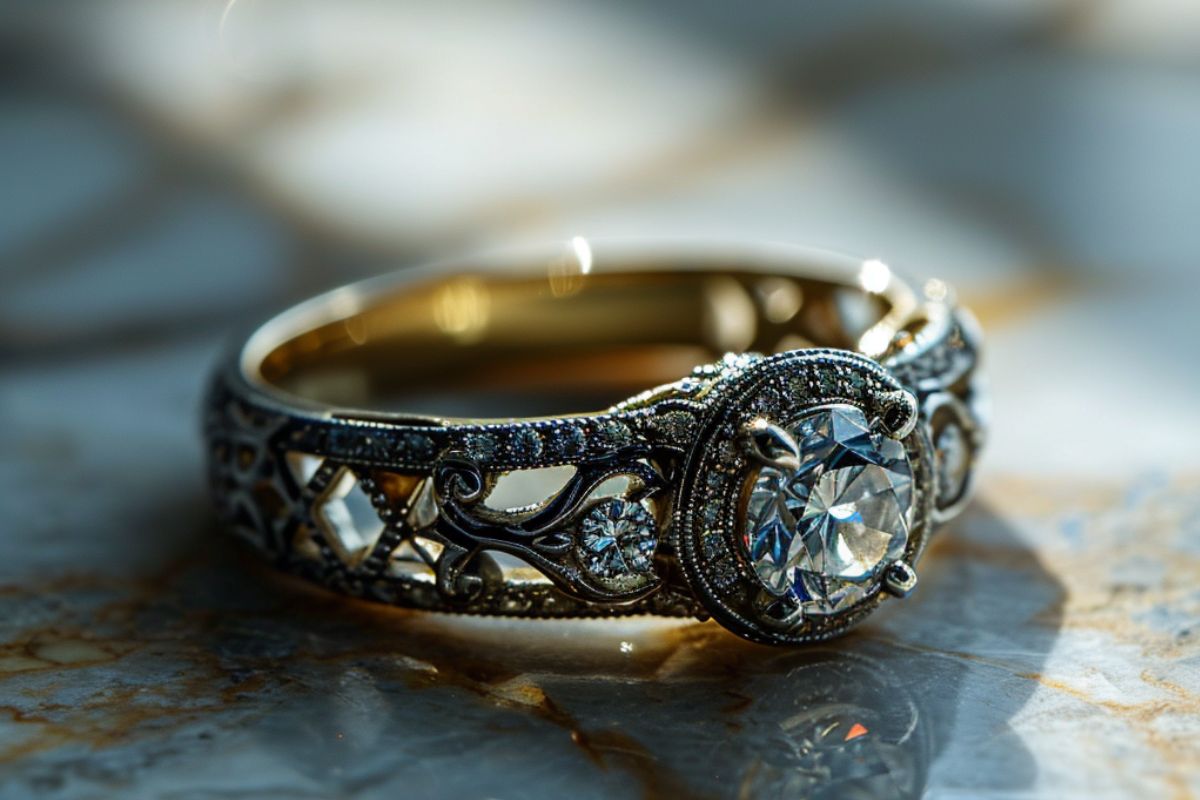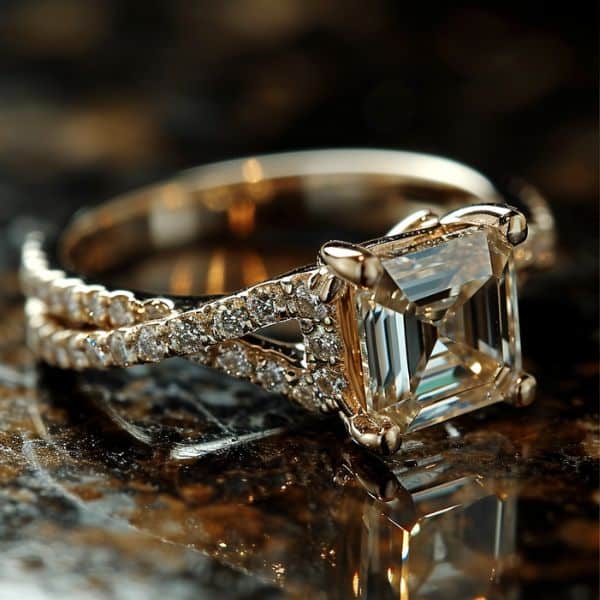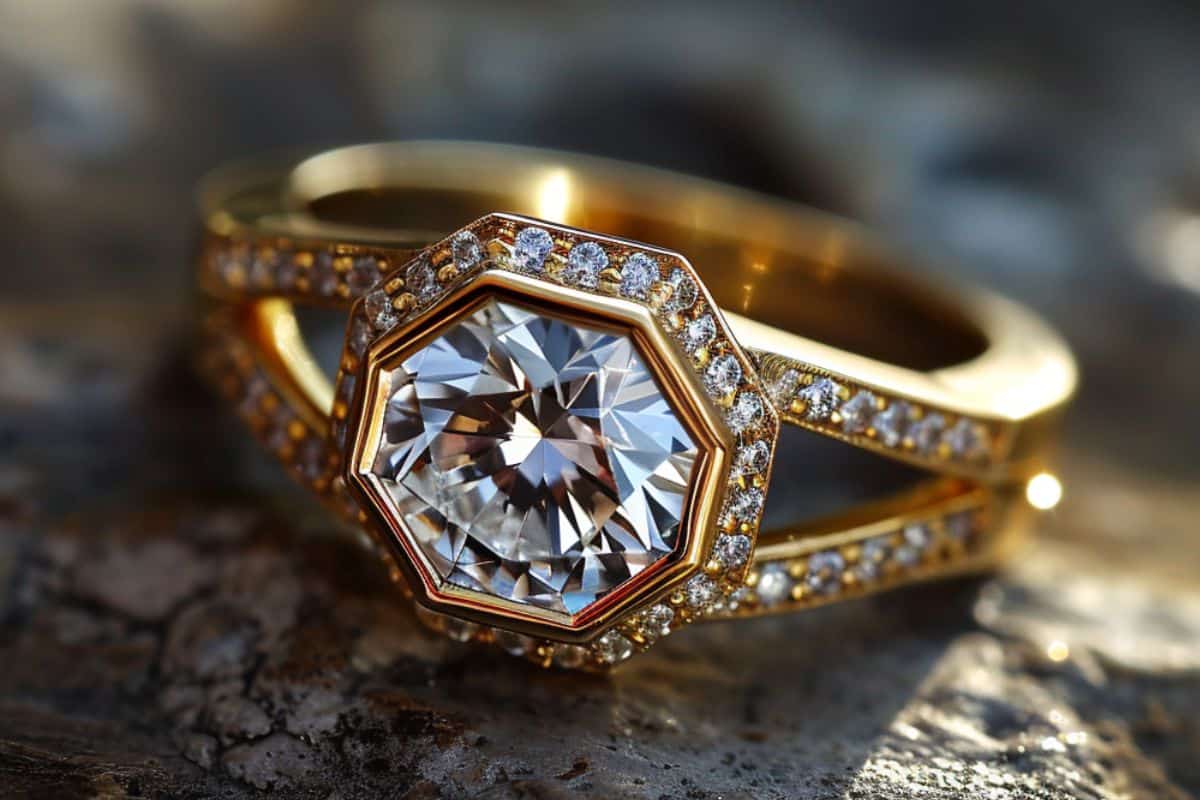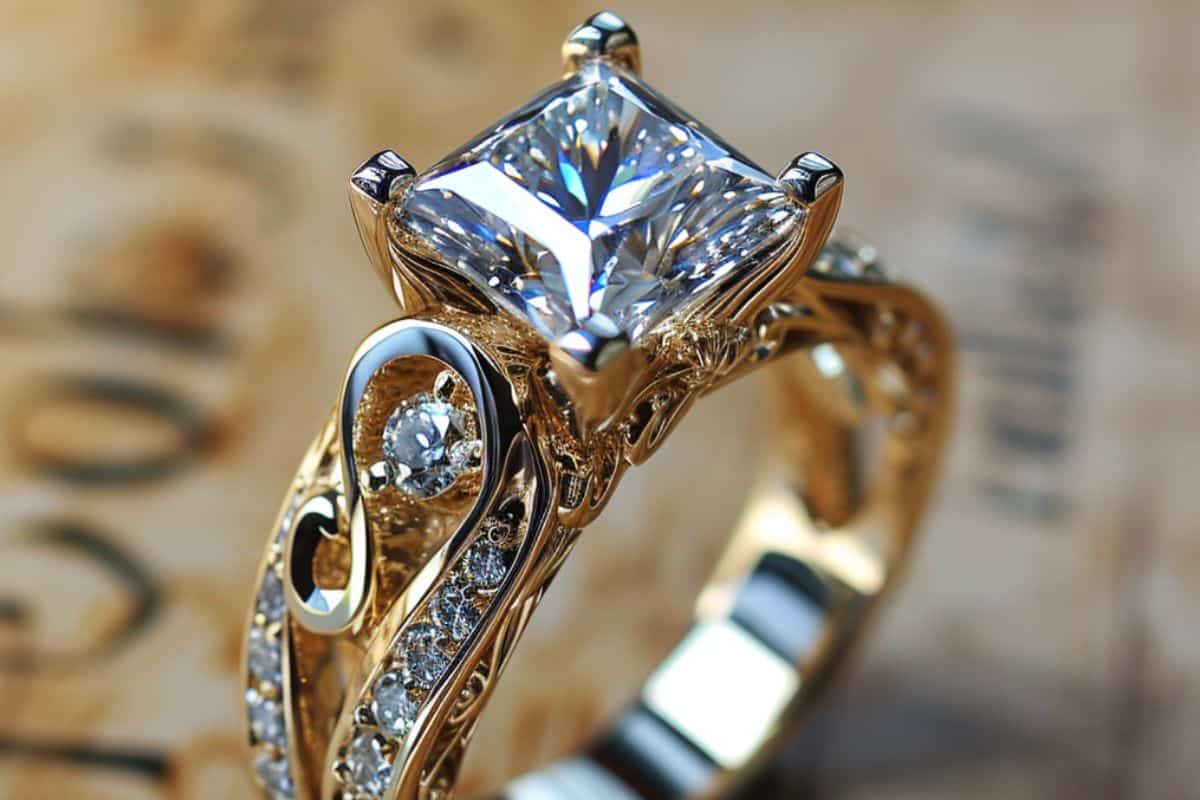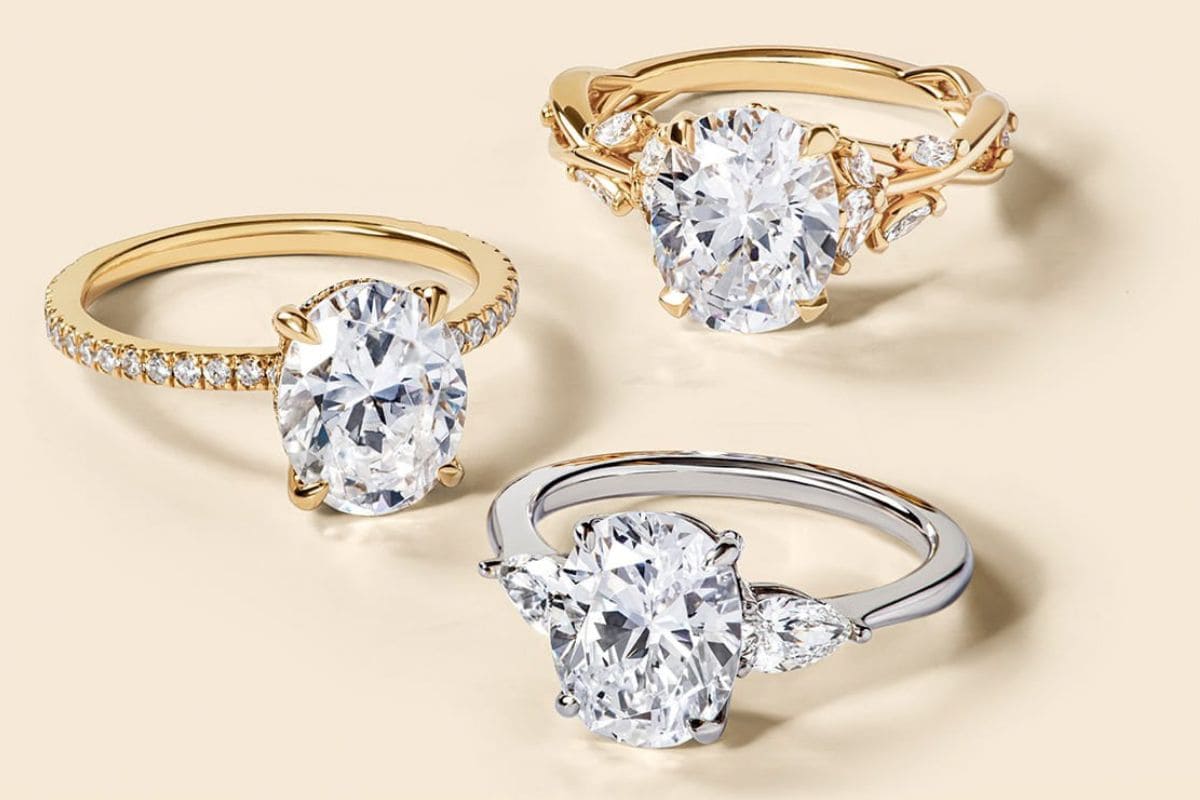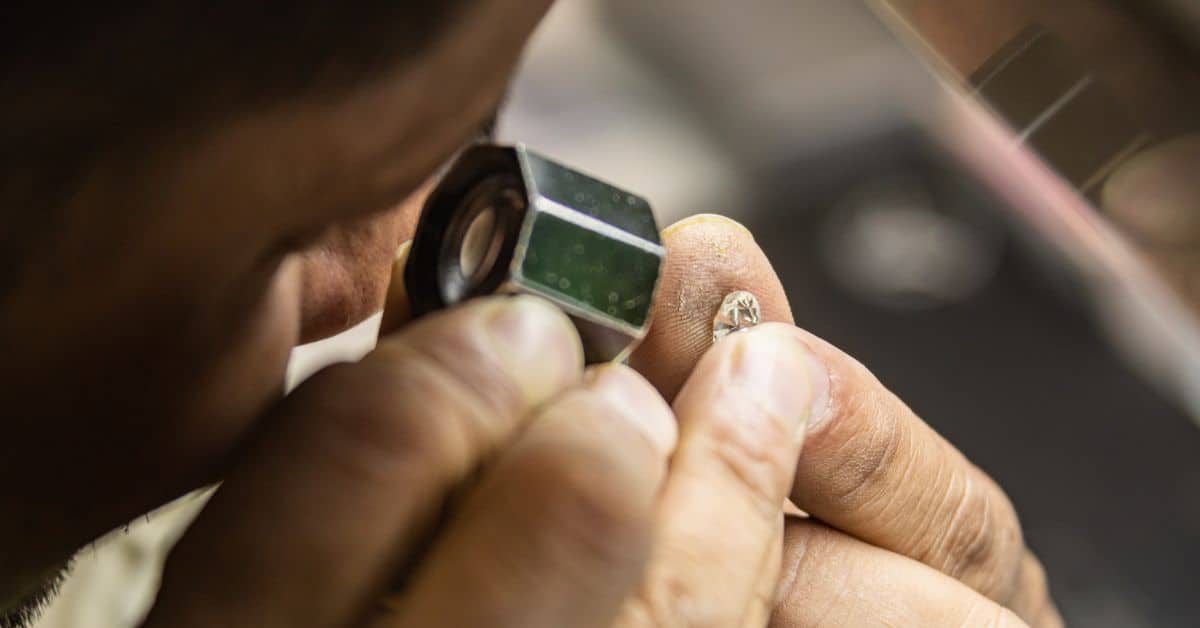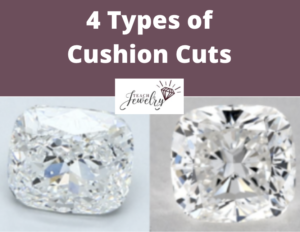
Cushion cut diamonds are known for their pillow-like shape, with curved edges and rounded corners. They often have 58 facets, but some variations have up to 64.
The cut is commonly used in engagement rings but is also placed in other pieces of fine jewelry. In fact, it was the standard engagement ring diamond until the round cut overtook its position in the 20th century.
There are many different cushion cuts, and each has unique characteristics that add to its appeal. Within each category, some traits overlap, so every cushion cut doesn’t always fall into a single classification.
We’ll explore the types of cushion cut diamonds, including what you should know about each and how to decide which is right for you.
1. Old Mine and Modern Cushion Cuts
Old Mine cushion cut diamonds were developed during the early 1900s and popular during the Victorian and Edwardian eras. The cut laid the foundation for what became the modern cushion cut.
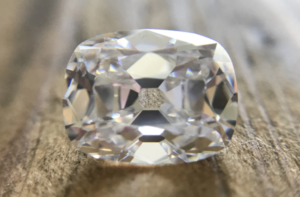
Also called antique or vintage cushion cuts, they exhibit less sparkle and brilliance compared to the modern version because of their large culets, steep crown angles, and small tables.
The best setting for these cushion cuts is a vintage setting.
If you view it from the top, you’ll often see a dark circle in the middle, which is its culet. This is an effective way to determine whether it’s an old mine or modern cushion cut.
Diamond cutters in this era didn’t have access to the technology used to enhance brilliance, so it offers a softer glow.
It’s a deep cut that lacks the face size to weight ratio found in other cushion cuts.
These traits mean old mine cushion cuts are a rare find in jewelry stores, but in many cases, their poor grades along the cut, clarity, and color result in an affordable price.
Most buyers opt for the modern version with improved scintillation, like this diamond.
In fact, if you’re considering an old mine cut, examine its grades across polish and symmetry. If it earned a “fair” or “good” grade, it’ll likely appear dull.
Modern cushion cuts command a premium because of their large facets and strong brilliance.
They’re similar to a round cut because the facets are designed in a way to maximize the amount of white light that returns to the viewer.
They also appear to have a wider diameter compared to other cushion cuts with the same carat weight.
2. Standard and Modified
Modern cushion cuts are divided into two categories: standard and modified.
Standard cushion cuts have between 58-64 facets, and most resemble the old mine cut. This vintage design has large, chunky facets with rounded sides and a shortened table.
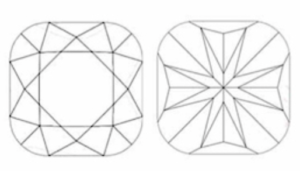
An estimated one percent of cushion cuts on the market today are cut this way. If you’re exploring the different types of cushion cuts at popular vendors, you’ll find the modified version almost exclusively.
When viewed from the top-down, it’s difficult to identify the difference between standard and modified cushion cuts. To the untrained eye, the two appear identical in every way.
The difference is standard cushion cuts are designed with an older cutting style. You can see this distinction when viewing their GIA certificates.
When viewed from the pavilion, the facet pattern has a slightly different cut.
It has a minimal impact on the diamond’s appearance or light performance and is instead a matter of the technique used to achieve the same effect.
This cushion modified brilliant has facets designed to maximize brilliance.
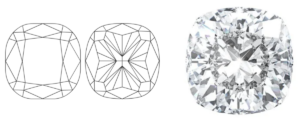
The diamond cutter also doesn’t have to remove as much of the rough diamond, so it retains more of its weight. There’s often an extra row of facets on the crown or pavilion.
3. Chunky and Crushed Ice
Cushion cuts are also classified as either chunky or having the appearance of crushed-ice.
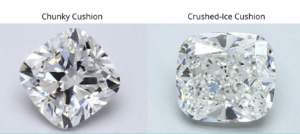
If you’re examining a cushion cut from the top-down and easily notice its facet pattern, it’s likely a chunky style. The other giveaway is its dome-like aesthetic.
Chunky cushion cuts are considered a modern style because they produce a higher amount of brilliance and fire with broad flashes of light. It doesn’t matter whether its surface area is elongated or condensed.
It’s similar to a round cut in terms of scintillation, but it doesn’t quite match its light return.
Where it differs is its facets don’t hide inclusions as well because of their size. It’s more difficult for inclusions to form unnoticed because the facets are wide open.
You’ll likely need to start your search with an SI diamond in order for it to appear eye-clean, but don’t be surprised if black spots or dark crystals are noticeable at that clarity grade.
But in regard to color, you can often select one graded in the near colorless range and still avoid noticeable yellow tints.
Crushed-ice cushion cuts earn their name because its facets mimic the appearance of crushed ice, with no discernible pattern.
It also resembles broken glass and the type of facet pattern you’ll find in a radiant cut.
In most cases, it’s caused by an extra row of facets, which can enhance its brilliance.
One of the benefits of this style is it more effectively disguises inclusions. The lack of broad, defined facets can hide small black spots, white twinning wisps, and transparent feathers.
If you’re searching for an eye-clean, crushed-ice cushion cut, begin your search at SI2 clarity, but you may have to move up the clarity scale, depending on its carat weight.
For example, the cushion cut engagement ring below has a VS2 clarity grade and appears eye-clean in high-resolutions photos.
The crushed ice version of cushion cuts often hold color more than chunky ones. In most cases, an H color grade indicates it’ll appear colorless.
But it’s important to view the diamond in person or through high-quality images to ensure blemishes and any yellow shades aren’t visible without magnification.
The diamond certificate also won’t indicate whether the cushion cut has the crushed-ice appearance, and both standard and modified versions can contain this pattern.
4. Rectangular and Square Cushion Cuts
There’s no defined length to width ratio for cushion cuts, but most are between 1-1.10.
Some have lengths noticeably longer than their widths to form a rectangular shape, known as an elongated cushion cut.
At a glance, the elongated versions resemble radiant cuts. It’s rare to find one with a length to width ratio greater than 1.25. Instead, most are under 1.2.
If it has a ratio of 1-1.05, it’ll appear square, like this one.
Even though there isn’t a price difference between the two, some buyers choose rectangular cushion cuts because they appear larger on your finger than ones where the weight is condensed and hidden below the table.
Another pro of this cushion cut is it makes your fingers appear more slim.
One way to compensate for a square cushion cut’s smaller appearance is to add a halo of diamond accents around it.
From a distance, it can imitate a single, larger diamond and increase its brilliance.
Whether you choose a square or rectangular cushion cut, either can be used as the center diamond on an engagement ring.
How to Decide Which Type of Cushion Cut is Right For You
There are many types of cushion cuts, and knowing which is right for you involves understanding the minor differences in their qualities.
There are distinctions in their degree of brilliance, type of facet pattern, and overall shape, so explore multiple versions within each category.
For example, some buyers prefer the crushed-ice facet pattern and square shape. Others choose chunky facets that have a more defined layout across the table.
By pairing several types of cushion cuts with distinct settings, you’ll land on the perfect diamond ring for you.

Jacob Clarke
Jacob Clarke is the founder of TeachJewelry.com.
He earned an Applied Jewelry Professional Diploma from the Gemological Institute of America (GIA) and now brings you essential information about diamonds, settings, and more.
Jacob has consulted with leading jewelry brands, and his work has been cited in Clean Origin, Diamond Nexus and industry publications.
He's also a member of the International Gem Society.
He enjoys discussing jewelry with readers, so contact him with any questions at jacob.clarke@teachjewelry.com.
